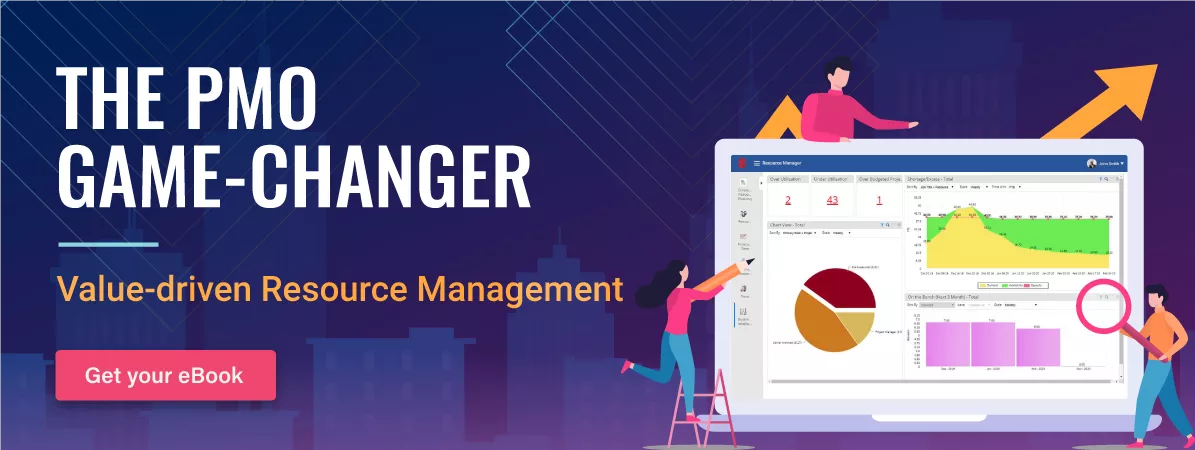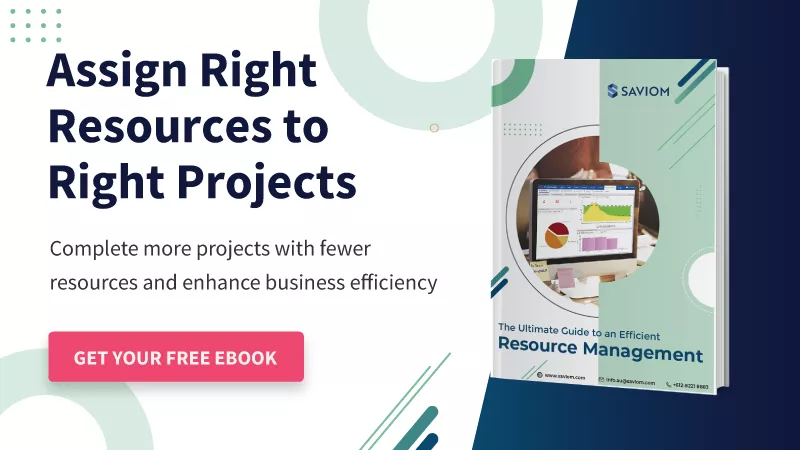Business magnate Steve Wynn once said, “Human resources is not what we do, it’s an engine that runs our business.”
Rightly said, for organizations to thrive in today’s fast-paced economy and maintain a competitive edge, hiring and retaining top talent is of prime importance. However, despite employees being a significant asset, the U.S. Bureau of Labor, 2021 edition report revealed that,
There has been an elevated and continued rise in the hiring/firing cycle due to the ill effects of the pandemic on the labor market.
Attrition can attribute to myriad reasons such as the economic downturn that happened during the pandemic, restructuring reasons, improper planning, and sometimes due to employee misconduct, consistent low performance, and so on.
However, frequent or consistent downsizing can pose serious financial risks and create an inefficient workplace. Employees may lose trust over time, and it can even lower their morale, engagement, and productivity.
Organizations can implement robust resource management software to minimize this frequency, formulate a solid strategy, and enhance overall efficiency.

This blog explains how a value-centric software and its intuitive features can help you reduce the hiring/firing cycle and nurture a positive work environment. Let’s get started.
Why do companies hire & fire resources?
Hiring is the process of recruiting and onboarding new employees within an organization. It involves a range of activities like job posting, candidate screening, interviewing, selection, and offering job contracts.
Firing, also known as termination, is the formal process of ending an employee’s employment within an organization. This can occur due to various reasons, such as performance issues, behavioral problems, policy violations, or other business-related reasons. Both these processes follow proper procedures and documentation.
However, many businesses hire employees for their business needs, and once the work is completed, they dismiss them or practice bulk firing.
Let’s take an example to understand this better; due to lack of visibility into future project demand, often firms start hiring resources because of improper planning and inaccurate estimation. This leads to a misalignment between capacity and demand. Thus, after recruitment, some resources end up on the bench due to an absence of suitable work opportunities, and eventually, firms have no option but to let go of them.
In another example, let’s consider that your firm won a critical project, and you require niche-skilled personnel for the same. However, this niche resource is required only for a one-time project, but you end up hiring a permanent resource instead of a contingent worker.
But once the project is completed, it becomes challenging to redeploy them to other assignments. Since you didn’t foresee this, your niche resources would become a liability, and eventually, you will have to get rid of them and initiate firing.
These frequent hiring/firing cycles can jeopardize the firm’s reputation; cause lost market opportunities due to challenges in attracting the right talent pool.
Along with inaccurate forecasting and resource capacity planning, some internal and external factors influence hiring firing cycles. They are enlisted in the following section:
Read More: Resource Management: A Comprehensive Handbook for Project Managers
Factors that can influence the hiring firing cycle
Hiring firing cycles are the major contributors to loss of profitability, reputation, and competitive edge. Let’s consider some potential internal and external reasons influencing these activities,
Internal factors-
Internal factors such as the organizational framework and policies play a critical role in influencing hire-to-fire practice. For instance, a recent report states that many companies do firing to meet their annual targets. Here the managers hire people internally or externally whom they intend to fire within a year. These people are hired just to meet the yearly turnover targets called Unregretted Attrition (URA).
Along with this, inadequate resource planning, poor work performance, prolonged absences, misleading or unethical behavior, property damage, or violation of company policy. etc. can also be factored in.
External factors-
Some external factors that lead to frequent hiring firing can be related to immigration, contractual issues, market uncertainties, etc. Additionally, if you cater to construction projects, environmental/climatic changes, unpredictable mishaps, etc., can also lead to an increase in hiring/firing cycles.
With all the factors in mind, let’s understand the consequences of the hiring/firing cycle on a business’s sustainability & profitability.
Negative impact of frequent hiring firing cycle on business
The earlier section highlighted all the possible reasons that compel firms to initiate hiring/firing. Now, let’s understand how it can adversely impact the companies:
Increase in project resourcing & overhead cost
Resources are one of the most significant investments of any business. Thus, companies spend a large portion of their revenue recruiting the right types of people, building their skill level, and paying them ongoing salaries. Due to frequent hiring/firing cycles, the firms have no choice but to spend a hefty amount of money on resources time and again who is eventually terminated, which escalates the overhead costs. As a result, it adversely impacts the firm’s bottom line.
Moreover, due to improper planning, managers resort to last-minute firefighting for competent resources and end up hiring them at a much higher cost, eventually causing budget overruns.
Deteriorating service quality
When an organization conducts frequent hire-to-fire practices, it takes a considerable amount of time to train the newly acquired talent again, accustom them to the company culture, provide project-related learnings, etc. Thus, new employees may not work up to full potential until they understand their job duties which in turn hampers the service quality and cause project delays.
Furthermore, constant hiring/firing lowers existing employees’ productivity as well. For instance, if a project team consists of five team members and suddenly two resources are fired. It can hinder project progress, causing lower productivity and sub-par work performance, thus deteriorating the overall deliverable’s quality and leading to client dissatisfaction.
Read More: The Effects of Low Productivity on Business Growth
Loss of reputation & business
What happens when a company implements constant hire and fire practices?
As discussed earlier, it directly affects resource productivity, decreases project performance, and lowers the quality of deliverables. Thus, a consistent dip in the output quality will lead to client dissatisfaction and loss of business.
Moreover, frequent hiring/firing or layoffs can make it challenging for firms to recruit the right talent, jeopardizing their reputation in the job market. Additionally, the terminated employees will put a bad word against the company, which further worsens the situation.
A surge in employee turnover rate
Recent research found that; after a layoff, existing employees experienced a 41% decline in job satisfaction and a 20% decline in job performance.
Supposedly, the existing workforce feel that termination choices were not fair or that the process was conducted without dignifying the contributions of the terminated employee. When they see their peers and colleagues are getting laid off, they start losing their trust in the company.
Thus, it leads to a high–degree of disengagement, and the long-term consequences of altering the work environment include increased voluntary turnover.
Read More: Ten Effective Strategies to Reduce Employee Turnover
Now that you are aware of how frequent hiring/firing cycles can cause a plethora of problems for your business, let’s look at the ways to mitigate it with the help of a robust resource management solution.
How resource management helps in reducing the hiring/firing cycle?
Here’s a rundown of how advanced resource management software benefits companies in reducing the hiring/firing cycle:
Identify and bridge the demand vs. capacity gap
The primary aim of resource managers is to allocate appropriate resources and fulfill the project demand on or before its onset. By implementing resource management software, they can get foresight into the pipeline and future resource demand.
Further, they can assess and identify the matching skillset from the existing capacity and also evaluate the demand gap. Accordingly, managers can proactively implement resourcing treatments to bridge the capacity vs. demand gap.
For example, in case of a shortfall, they can implement out rotation and backfill strategy, upskill a benched resource, conduct planned hiring, etc. For excess capacity, they can bring forward the pipeline projects, sell the excess resources, and so on. Overall, taking the right resourcing action in advance to bridge the capacity gap significantly minimizes hiring/firing cycles.
Read More: What is Resource Capacity Planning? An Ultimate Guide for Every Project Manager
Ensure the right mix of permanent & contingent resource
As discussed in the previous section, one of the significant contributors of frequent hiring/firing is the inability to form the right mix of permanent and contingent workforce based on project demand.
Using the resource management software, managers can get complete visibility of future project demands in advance. It allows managers to foresee the capacity vs. demand gap and helps them understand if the requirement is one-time or recurring in multiple projects.
Leveraging this information, they can form a balanced pool of permanent and contingent resources and minimize unnecessary firing and overhead costs.
Foster shared service delivery model
Today, organizations have become exceedingly complex and thus follow a matrix structure to leverage interdepartmental resources and control overhead costs. However, the lack of visibility into the resource pool can create silos in communication. Thus, managers may hire resources from external channels to fulfill resource requests, even if a resource with a similar skill set is working within the organization.
A robust resource management software can combat this with its 360- degree visibility of the enterprise-wide resource pool. That way, managers can get a centralized view of the workforce regardless of the location, and they can schedule a resource with the same expertise from a low-cost site.
In addition, it will help them control the project costs and foster a shared service model within matrix boundaries. This leaves no room for unnecessary hiring or firing practices.
Read More: What is Resource Scheduling? How to Schedule Resources for Projects Efficiently?
Facilitate effective bench management
After a sudden ramp-down of the ongoing project and a lack of foresight into future demand, resources will end up on the bench for a long time. These resources are not profitable as they are not generating any revenue and eventually may let go of by the firm.
With advanced forecasting solutions and unified view resources’ present and future schedules, managers can predict these ramp-down activities and schedule them for future appropriate tasks in advance. This significantly reduces their bench time.
In addition, project vacancy reports can also be used to quickly assign the benched resources to the right billable or strategic work. If their skills do not align with any project vacancies, then on-the-job training or reskilling can be taken up to prepare them for future projects, thus reducing unplanned hiring firing cycles.
Streamline upskilling & training programs
An IBM study revealed that- “Training and Retraining Current Employees is Cheaper Than Hiring New Ones.”
Often the skillset of seasoned employees of the firm becomes obsolete and may no longer prove useful for projects. In these cases, companies will resort to bulk-firing. However, instead of doing that, organizations should invest in appropriate training and upskilling programs to retain the workforce.
As mentioned earlier, modern resource management software provides foresight into pipeline project demand. In case they identify a skill gap, they can streamline training and upskilling activities for the existing workforce. This will help them improve their current job performance or even be eligible for higher roles, reducing the chances of hiring or firing employees.
Additionally, a training scheduling solution can help you manage and schedule these courses on a centralized platform.
Thus, when paired with the right strategy, a resource management solution can prove highly beneficial in reducing hiring firing cycles.
Read More: Importance of skill development in making your workforce future-ready
Conclusion
The workforce is the success driver for any business. Thus, the onus is on organizations to manage their resource pool efficiently and tap into their maximum potential. However, layoffs are often unavoidable during transformation and restructuring. Still, organizations can limit the negative impact and minimize the frequency by following the strategies mentioned above and deploying a modern resource management tool.
It can help you reevaluate your existing practices, create the optimal resource mix, and significantly reduce hiring/firing cycles. In addition, it will help you retain valued talent to achieve an organization’s strategic and financial goals and remain relevant in the long haul.
The Glossary
Read More: Glossary of Resource Workforce Planning, Scheduling and Management
SAVIOM Solution
SAVIOM is the market leader in offering the most powerful and configurable solutions for managing enterprise resources efficiently and effectively. Having more than 20 years of experience, this Australian-based MNC has a global presence in over 50 countries. It is also popular with more than 100 customers and helps them achieve their business goals. SAVIOM also has products for project portfolio management, professional service automation, and workforce planning software which can be easily customized as per business requirements.











